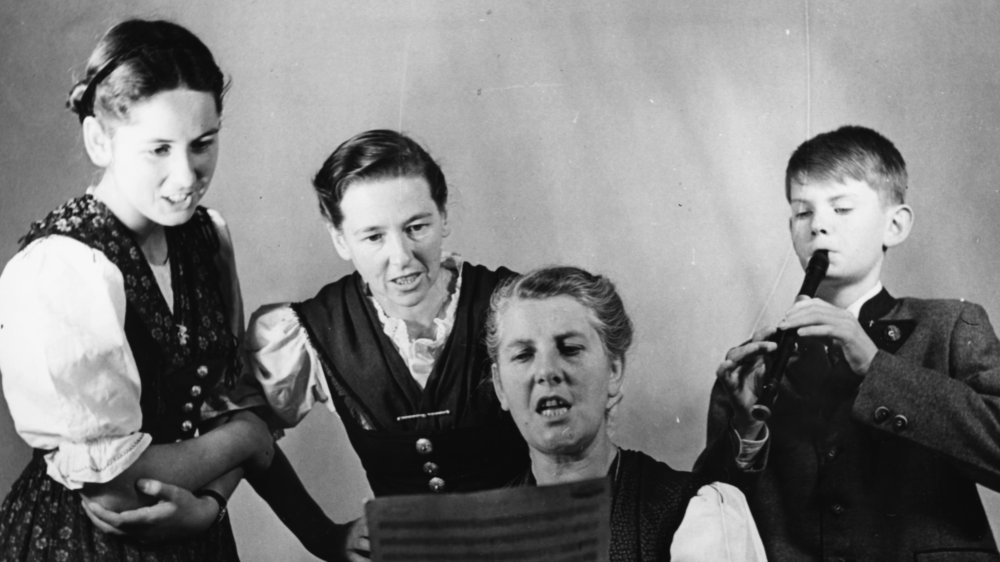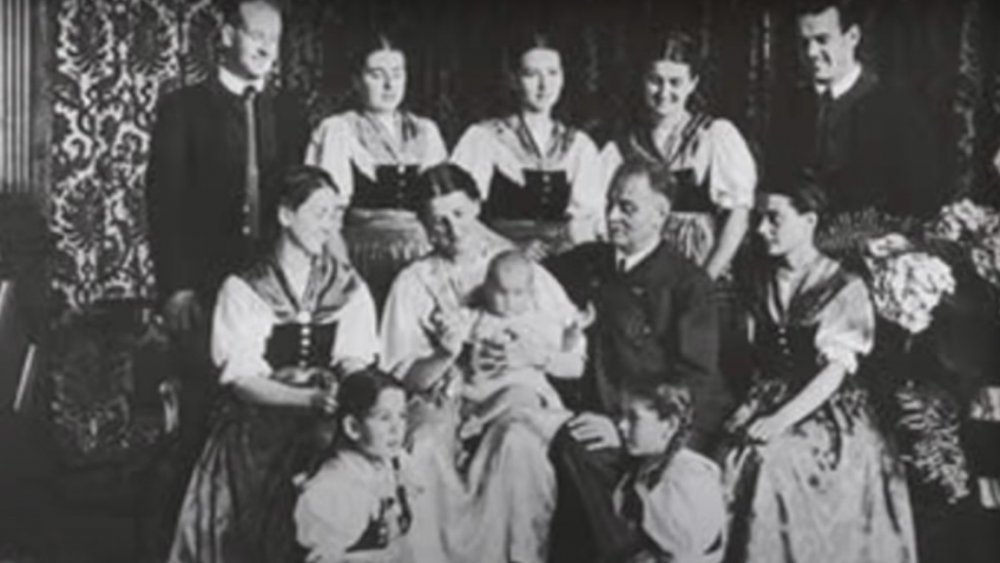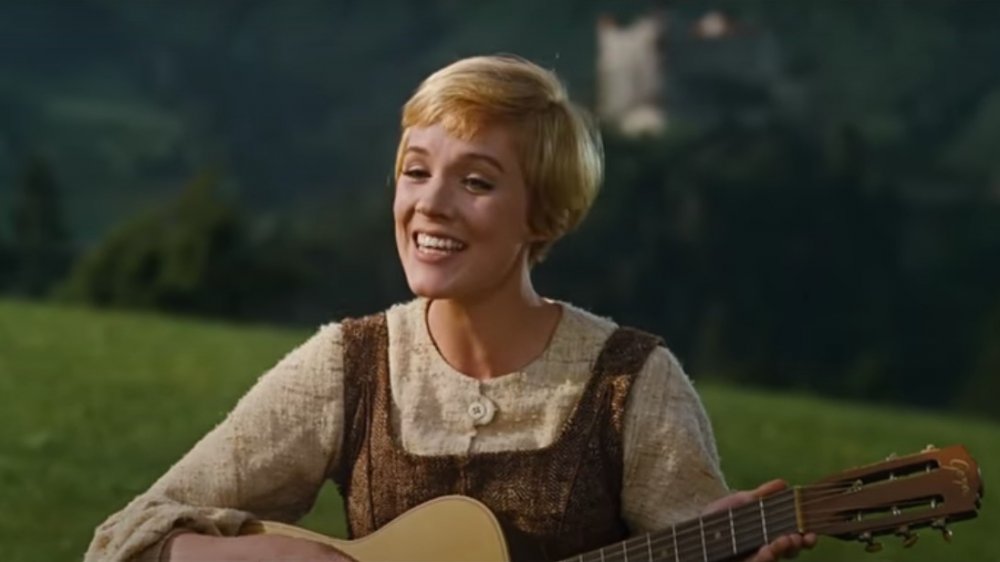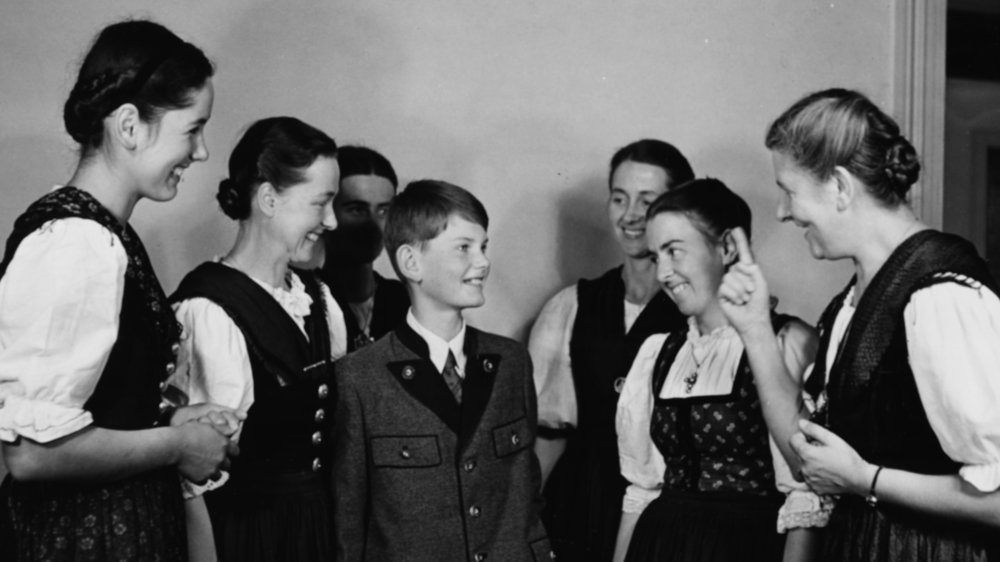The True Story Of The Von Trapps From The Sound Of Music
Long before CGI, Hollywood was a do-it-yourself kind of town. Always has been. Need a dinosaur? We'll call the model shop. Street in 19th Century Paris? Go to the end of the building, take a left, there you are. If you end up in 1st Century Rome, you've gone too far. And watch out for the chariots.
"In Hollywood you make your own geography," said Robert Wise, the man who directed one of the single most financially successful films in history, The Sound of Music. Maria von Trapp — the real Maria, not Julie Andrews — had complained that the movie showed the family hiking from Salzburg, Austria, over the Alps to Switzerland. That's not actually how Europe is laid out — "Don't they know geography in Hollywood?" von Trapp complained. It's a stirring scene there at the end. The family secretly gathering up its principles and baggage and hoofing it out of Austria and the encroaching Nazi war machine, climbing every mountain. It's far more picturesque and inspiring than the truth, which is that they got onto a train and went to Italy, where Papa von Trapp — Georg — had citizenship. But we're getting ahead of ourselves.
The true parts: Georg von Trapp really was a retired Navy officer. He'd commanded U-Boats during World War I, and quite successfully, attacking Allied shipping in the Atlantic. Post-war, Georg was unemployed. His first wife came from money, and while the family wasn't as wealthy as the movie would have us believe, they were comfortable.
Eventually there would be 10 children
He really was a widower, with seven children, but it was only one of those children who needed a tutor — Maria, the second oldest, who'd been seriously ill and missed school. Maria (the adult) really was a novice, a beginner nun at the nearby convent. She'd had a harsh upbringing herself, orphaned by the age of nine, raised by an abusive uncle until she discovered religion while at teachers college and entered the convent. Georg had requested one of the nuns to act as a tutor, and the convent sent Maria. In terms of timelines, this wasn't on the cusp of the rise of Nazi Germany; it was in 1926.
Maria stayed on as governess, and by her own account, fell in love with the seven children, not with Georg. As an article on the National Archives quotes her autobiography, "I really and truly was not in love. I liked him but didn't love him. However, I loved the children, so in a way I really married the children. . . . [B]y and by I learned to love him more than I have ever loved before or after." As for Georg himself — 25 years her senior, reports The Mirror — he is consistently described as the kind, gentle, affectionate parent. Maria was the stern one, prone to explosive outbursts of temper that also subsided as quickly — as Smithsonian says, "yelling, throwing things and slamming doors." Says Biography, "It was actually Maria herself, with her emotionally stunted upbringing, who needed thawing."
Julie Andrews starred in the movie musical
A bad banking investment by Georg wiped out the family's fortune and they scrambled to make ends meet. That meant monetizing a hobby: music. Unlike the movie, the children and their father were already musical when Maria showed up. A local priest helped them shape their performances — hymns, chant, and folk songs — and served as music director. The family had been performing for years, including award-winning turns at music festivals, when they finally left Austria. As daughter Maria said, "We did tell people that we were going to America to sing. And we did not climb over mountains with all our heavy suitcases and instruments. We left by train, pretending nothing," reports the National Archives. By the time they left there were nine children — Maria (the adult) and Georg had two children of their own. A third child would be born in the United States.
There were two films made in Germany about the von Trapps. Those film companies had purchased the rights to the family's story — Maria had written her first book, The Story of the Trapp Family Singers, back in 1949 — in a deal that Maria (the adult) might not have quite understood; she only got about $9,000.
Hard times meant monetizing a hobby: music
Rogers and Hammerstein bought the U.S. rights and turned the story into a 1959 Broadway musical starring Mary Martin that in turn became the record-shattering Julie Andrews vehicle in 1965. And how did the family feel? The Mirror quotes the eldest daughter, Agathe: "It's a very nice story but it's not our story. If they hadn't used our name I probably would have enjoyed it." Maria (the adult) offered to be an advisor for the big-budget movie musical. The director refused (we hope politely).
After emigrating to the United States, the family established a ski lodge and music camp near Stowe, Vermont. Georg died in 1947; Maria (the adult) in 1987, as the BBC tells us. Of the (ultimately) 10 children, only the three born from Georg and Maria (the adult) survive today. The last of the original seven, Maria (the child), died in 2014 at the age of 99.
If you're really curious, here's a YouTube clip of Maria teaching her movie self, Julie Andrews, a lesson in yodeling. It's telling.



